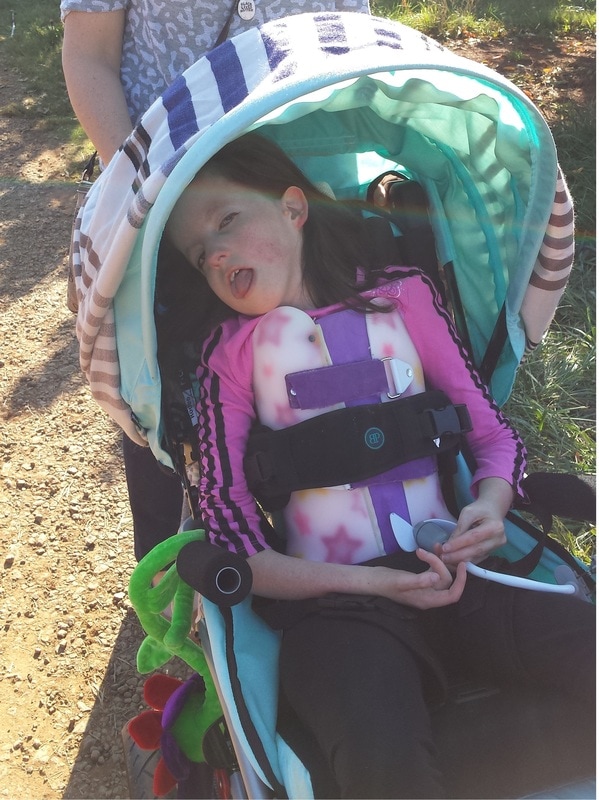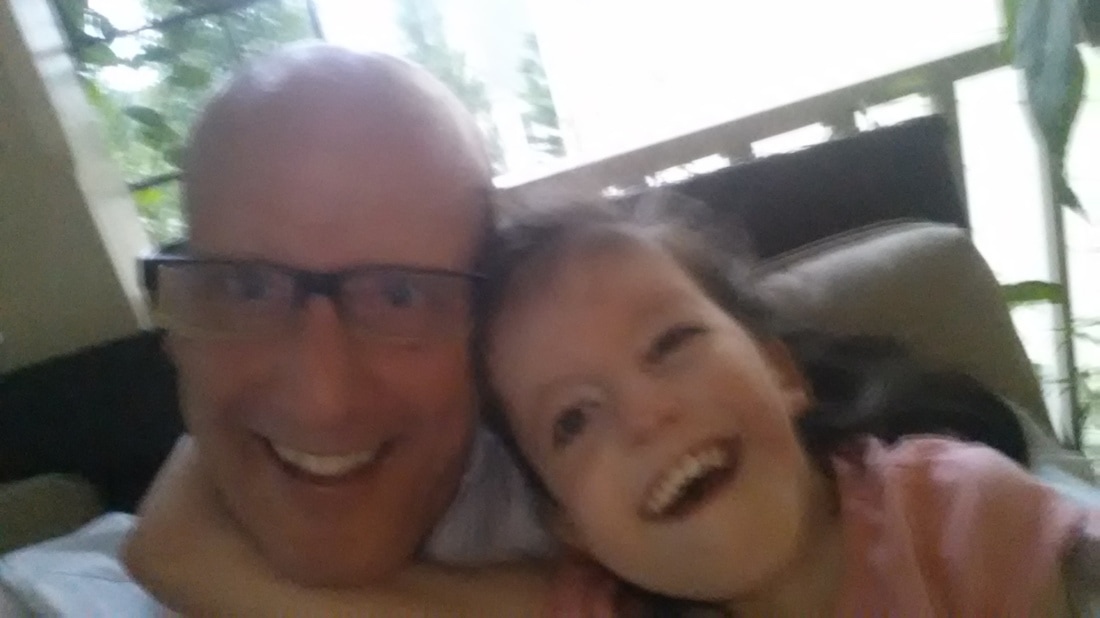By way of background, Trisomy-18 is a chromosome disorder. Each cell in the human body has 23 pairs of chromosomes, strands of DNA. Trisomy means that there are three copies, not two, of one of the pairs. Three copies of the 21st chromosome is Trisomy-21, also called Downs Syndrome. Three copies of the 18th chromosome give you Trisomy-18, also called Edwards Syndrome. (So now you know why they picked the eighteenth of March—3/18—as Trisomy-18 awareness day. )
There’s no particular cause—it’s a fluke. There’s also no cure, and over 90% of the children born with Trisomy-18 die within the first year.
Esprit is unusual for still being here at age 13, but her profile is typical of Trisomy-18 in other ways. She cannot walk or speak, and she learned to sit upright about a year ago. Cognitively, she’s like a one-year old on many dimensions.
My goal here is not to raise awareness about the medical side of Trisomy-18—if you’ve read to this point, you’ve come close to the end of my knowledge—but rather to consider the manner in which you are most likely to encounter a child with Trisomy-18; out and about with your own child. Older kids (and their parents) will sneak a surreptitious glance at Esprit. Many adults will smile and some will approach her, always with warmth.
But kids aged two to six are generally flummoxed and show it. Parents are usually not prepared to respond to their child’s curiosity and bafflement.
Your five-year-old will notice that Esprit doesn’t look like other children. She has facial features typical of Trisomy-18 kids. Her head is small, her ears low-set, her chin recedes, and her eyelids droop, so she usually looks sleepy.
To a five-year old, this is a sight.
So usually he stares. (I'll call the child "he" to keep pronouns unambiguous, cf Esprit.) That makes the parent uncomfortable, and they try to call the child away, distract him, so he’ll unlock his gaze. The parent doesn’t say “don’t stare;” doing so would acknowledge that he’s staring, and that there’s something to stare at. Eventually, the parent might drag or chivy the child away, with the child looking back the whole time, staring.
I appreciate that you don’t want your child to stare, but ignoring his interest or trying to get the hell away doesn’t work well and sends your child the message that there’s something wrong here. And admonishing the child “it’s not nice to stare” once out of earshot will not make him accept a disabled kid as part of the shopping mall crowd next time he sees one. Kids this age are too young for that. (If there's any effect, it will be to make him a sneakier starer.)
Here’s an alternative. Encourage your child to add a social element to the staring. It’s natural and unobjectionable that he’s curious about a child who looks different. Staring feels wrong because interaction with another person demands some outward acknowledgement that there is a fellow human in front of you. You can gape at a skyscraper or a sunset, but no matter how interesting another person is to behold and for whatever reason, you must give social signals that you recognize that they are not an object.
Once you add social signals, staring doesn’t feel like staring. Staring while smiling, for example, seems perfectly appropriate. Sure, a five-year old’s voluntary smile is comically phony, but who cares? It’s the thought that counts. Or encourage your child to say “hi,” or to wave. Any of these changes the dynamic from “observation of a spectacle” to a bid for social interaction. (It will also thrill Esprit.)
More outgoing kids will ask questions, usually of my wife or I rather than Esprit. Please don’t shush them, and please don’t worry about what they will ask. Parents (and strangers) don’t expect social graces at this age, so we know we’ll hear “what’s wrong with her?” or “what’s that? (pointing to her orthotic). We’re very used to talking with children about Esprit’s disability. Questions are a way of initiating social interaction. They’re great.
Every family’s experience is different, of course, and I’d never claim to speak for all parents of disabled children. But the next time your little one stares at someone different, give the social signal strategy a try. Let me know how it goes.


 RSS Feed
RSS Feed